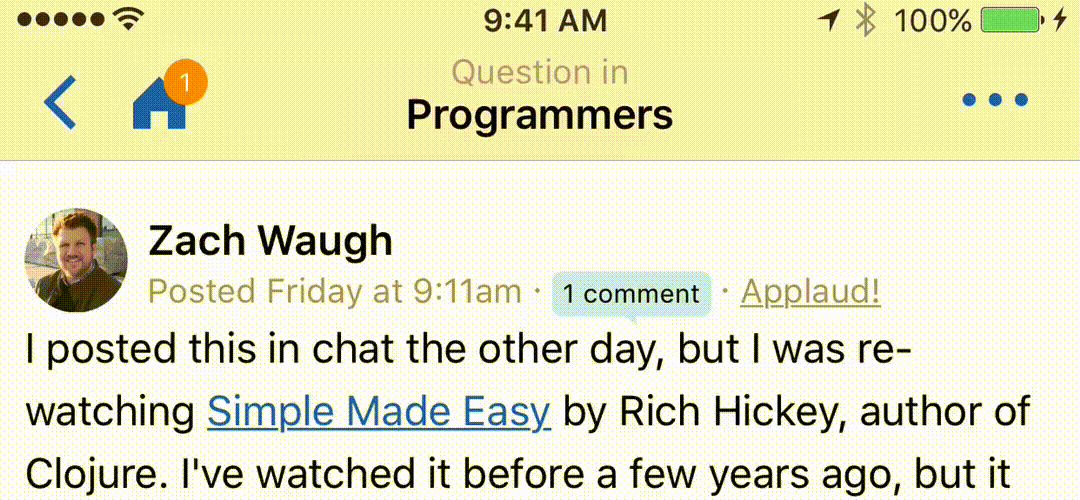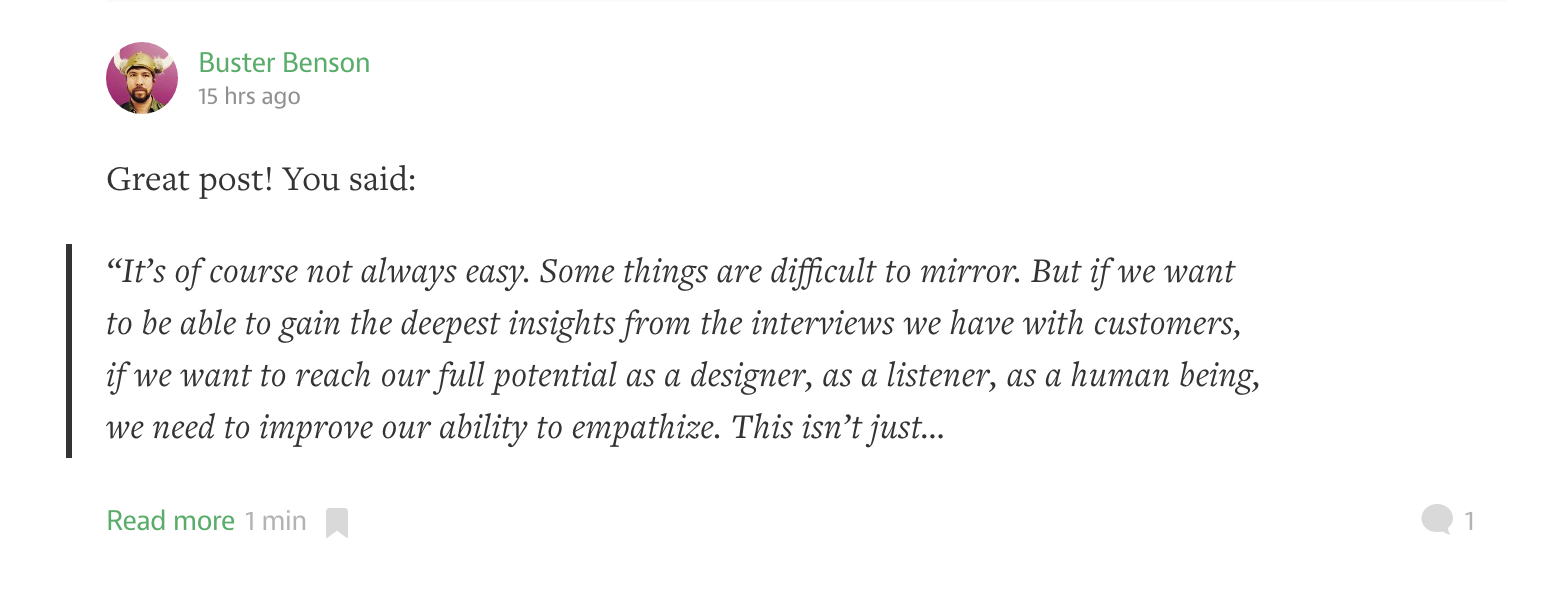“Sometimes you just have to see it to get a feel for it”
^ That’s what Jason said to me yesterday right after he pushed some tweaks to a design we’ve been ping ponging on this week.
When I read that I found myself nodding my head and thinking, “ain’t that the truth”. Now, if only I’d learned that lesson a few years ago.
You see, not long ago I used to spend a lot of time and energy pushing back on ideas. I think I must have seen myself as some sort of Design Guardian or something. I know, stupid, right? In that (ridiculous) role I seemed to think it was my job to protect the product from “bad” ideas. Only problem is, how did I know if an idea was “bad” or not?
One of my teammates would usually suggest an idea, I’d imagine it in my mind, and then (unfortunately all too often) I’d explain why it would never work. I bet I missed out on a lot of great ideas doing that, probably some good friendships too :(.
It gets worse though. When shutting down an idea without giving it a chance to be seen, I miss out in at least three ways:
- The idea could be fantastic once I saw it, used it and felt it.
- While trying it out, I may stumble into another, even better idea.
- I’m stifling my teammates, and discouraging them from jumping in and helping.
All three of those kinda suck.
Nobody Wants a Design Guardian.
I’ve learned that I’m not a guardian, and that I never should have tried to be one. The team didn’t hire me because they thought I’d be a great guard. No, they hired me to try things, to experiment, to build stuff, and to find out what worked.
The Good News
Here’s the good news though: it’s usually easy to try out an idea enough to actually see it, use it, and feel it. In fact, I think in the past I’ve wasted more time bickering than I ever spent just finding out!
So, the next time an idea comes your way, give it a chance. Try building or prototyping it, seeing how it actually feels. You’ll be done faster than you could even argue about it!








